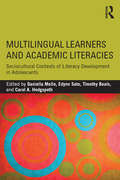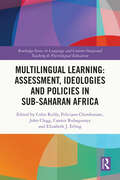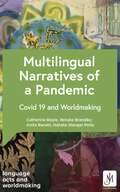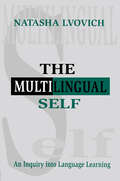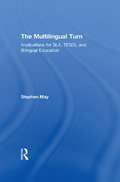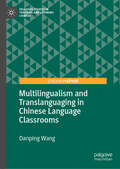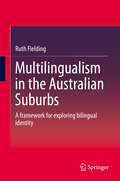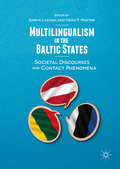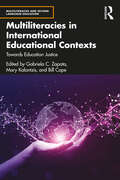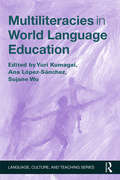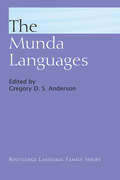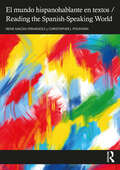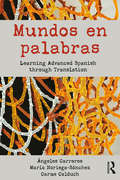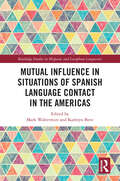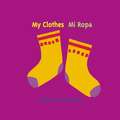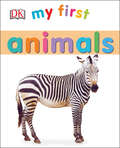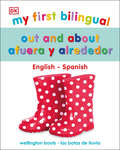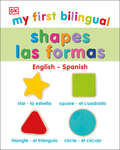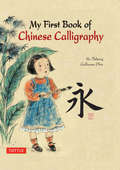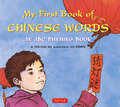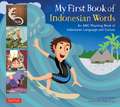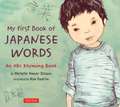- Table View
- List View
Multilingual Learners and Academic Literacies: Sociocultural Contexts of Literacy Development in Adolescents
by Daniella Molle Edynn Sato Timothy Boals Carol A. HedgspethShifting the discourse from a focus on academic language to the more dynamic but less researched construct of academic literacies, this volume addresses three key questions: • What constitutes academic literacy? • What does academic literacy development in adolescent multilingual students look like and how can this development be assessed? • What classroom contexts foster the development of academic literacies in multilingual adolescents? The contributing authors provide divergent definitions of academic literacies and use dissimilar theoretical and methodological approaches to study literacy development. Nevertheless, all chapters reflect a shared conceptual framework for examining academic literacies as situated, overlapping, meaning-making practices. This framework foregrounds students’ participation in valued disciplinary literacy practices. Emphasized in the new college and career readiness standards, the notion of disciplinary practices allows the contributing authors to bridge the language/content dichotomy, and take a more holistic as well as nuanced view of the demands that multilingual students face in general education classrooms. The volume also explores the implications of the emphasis on academic literacy practices for classroom instruction, research, and policy.
Multilingual Learning: Assessment, Ideologies and Policies in Sub-Saharan Africa (Routledge Series in Language and Content Integrated Teaching & Plurilingual Education)
by Colin Reilly Feliciano Chimbutane John Clegg Casmir Rubagumya Elizabeth J. ErlingThis edited volume provides the follow up to Erling et al.’s (2021) Multilingual Learning and Language Supportive Pedagogies in Sub-Saharan Africa. The strategies put forward in Volume 1 included multilingual pedagogies that allow students to draw on their full linguistic repertoires, translanguaging and other language supportive pedagogies. While there is great traction in the pedagogical strategies proposed in Volume 1, limited progress has been made in terms of multilingual education in SSA. Thus, the main focus of this follow-up volume is to explore the question of why former colonial languages and monolingual approaches continue to be used as the dominant languages of education, even when we have multilingual pedagogies and materials that could and do work and despite substantial evidence that learners have difficulties when taught in a language they do not understand. This book offers perspectives to answer this question through focusing on the internal and external pressures which impact the capacity for implementing multilingual strategies in educational contexts at regional, national, and community levels. Chapters provide insights into how to better understand and work within these contemporary constraints and challenge dominant monoglossic discourses which inhibit the implementation of multilingual education in SSA. The volume focuses on three main areas which have proven to be stumbling blocks to the effective implementation of multilingual education to date, namely: Assessment, Ideology and Policy. An insightful collection that will be of great interest to academics, researchers, and practitioners in the fields of language education, language-in-education policy and educational assessments in the wide range of multilingual contexts in Africa.
Multilingual Narratives of a Pandemic: Covid 19 and Worldmaking (Language Acts and Worldmaking)
by Various Professor Catherine BoyleWe narrate everything. We construct the world around us by telling its stories, shaping the language we use to describe what is happening to us; language that is used and adapted in the media in response to moments of crisis. This language in turn shapes how we see the world. This is what we call 'worldmaking'. When we look for solutions to problems, we so often start by telling stories to each other in our communities, stories that set a crisis in context, relate it to our historical experience, help us to understand it in the context of our local communities and contrast those stories to dominant narratives. In this way, language becomes a physical and material force in our world, through which we construct our personal, local, transnational and spiritual identities.'Worldmaking in the Time of COVID-19', the project that informs this book, was an early response to the experience of living through the COVID-19 pandemic - intended as a contribution to our collective understanding of the COVID-19 pandemic. Following comparison and analysis of over 1.1 million news articles from 117 countries in twelve different languages, this timely reflection follows the course of this investigation, with three main objectives: - to capture the languages of the early pandemic (January-April 2020); - to offer a transferable methodology for exploring world events in multiple languages; - and to share some of the key findings of researchers. Like all the volumes in the Language Acts and Worldmaking series, the overall aim is two-fold: to challenge widely-held views about language learning as a neutral instrument of globalisation and to innovate and transform language research, teaching and learning, together with Modern Languages as an academic discipline, by foregrounding its unique form of cognition and critical engagement. Specific aims are to:· propose new ways of bridging the gaps between those who teach and research languages and those who learn and use them in everyday contexts from the professional to the personal· put research into the hands of wider audiences· share a philosophy, policy and practice of language teaching and learning which turns research into action· provide the research, experience and data to enable informed debates on current issues and attitudes in language learning, teaching and research· share knowledge across and within all levels and experiences of language learning and teaching· showcase exciting new work that derives from different types of community activity and is of practical relevance to its audiences· disseminate new research in languages that engages with diverse communities of language practitioners.
Multilingual Narratives of a Pandemic: Covid 19 and Worldmaking (Language Acts and Worldmaking)
by Various Professor Catherine BoyleWe narrate everything. We construct the world around us by telling its stories, shaping the language we use to describe what is happening to us; language that is used and adapted in the media in response to moments of crisis. This language in turn shapes how we see the world. This is what we call 'worldmaking'. When we look for solutions to problems, we so often start by telling stories to each other in our communities, stories that set a crisis in context, relate it to our historical experience, help us to understand it in the context of our local communities and contrast those stories to dominant narratives. In this way, language becomes a physical and material force in our world, through which we construct our personal, local, transnational and spiritual identities.'Worldmaking in the Time of COVID-19', the project that informs this book, was an early response to the experience of living through the COVID-19 pandemic - intended as a contribution to our collective understanding of the COVID-19 pandemic. Following comparison and analysis of over 1.1 million news articles from 117 countries in twelve different languages, this timely reflection follows the course of this investigation, with three main objectives: - to capture the languages of the early pandemic (January-April 2020); - to offer a transferable methodology for exploring world events in multiple languages; - and to share some of the key findings of researchers. Like all the volumes in the Language Acts and Worldmaking series, the overall aim is two-fold: to challenge widely-held views about language learning as a neutral instrument of globalisation and to innovate and transform language research, teaching and learning, together with Modern Languages as an academic discipline, by foregrounding its unique form of cognition and critical engagement. Specific aims are to:· propose new ways of bridging the gaps between those who teach and research languages and those who learn and use them in everyday contexts from the professional to the personal· put research into the hands of wider audiences· share a philosophy, policy and practice of language teaching and learning which turns research into action· provide the research, experience and data to enable informed debates on current issues and attitudes in language learning, teaching and research· share knowledge across and within all levels and experiences of language learning and teaching· showcase exciting new work that derives from different types of community activity and is of practical relevance to its audiences· disseminate new research in languages that engages with diverse communities of language practitioners.
The Multilingual Self: An Inquiry Into Language Learning
by Natasha LvovichThis book relates the author's stories about how languages have integrated her being, and defined and formed her sense of self. The idea of writing autobiographical stories of her multilingual life came from her long-term commitment to foreign language teaching and from a recent, extremely rich and valuable experience teaching English to immigrants in the U.S. While reading and studying various aspects of second-language-related-theory -- linguistics, psychology, anthropology, and sociolinguistics literature -- the author realized how estranged language learners are from all the research, speculations, hypotheses, and achievements of scholarship. A Russian immigrant, the author tells stories to her ESL students to help them understand why and at what price successful language acquisition and acculturation is realistic. Not only can students learn from her stories which encourage discoveries about their own behaviors or problems, but they might want to respond and tell about their own struggles with a foreign language. By becoming writers and interpreters of her text and by making it their own, students can construct their own virtual texts. The stories told throughout are those of a language learner, who is also a linguist and language teacher. As such, they can bridge the gap between second language research and practical teaching and learning. Moreover, this book can help initiate language learners along with their teachers into scholarship. Second language teachers and graduate students preparing for a teaching career might see this book as an illustration and validation of the studied theory and an inner voice of their students at the same time. Multidisciplinary by nature, it can also be used in several college courses such as cultural anthropology, anthropo- and socio-linguistics, sociology, multicultural education, ethnography, bilingualism, and the study of immigrant experience. There are numerous applications of the book in the educational field at various levels of adult learning programs which might be determined by the objectives and by the instructor's vision of it in the curriculum. It is also intended as a message to the general public and to all thinking individuals in search of identity. It will popularize the idea of the importance of foreign language learning, language education, linguistic literacy, and metalinguistic awareness, of illuminating self-discovery through the treasure of multilingual experience, capable of giving birth to a new, sophisticated, spiritually complex and enriched multicultural identity.
The Multilingual Turn: Implications for SLA, TESOL, and Bilingual Education
by Stephen MayDrawing on the latest developments in bilingual and multilingual research, The Multilingual Turn offers a critique of, and alternative to, still-dominant monolingual theories, pedagogies and practices in SLA, TESOL, and bilingual education. Critics of the ‘monolingual bias’ argue that notions such as the idealized native speaker, and related concepts of interlanguage, language competence, and fossilization, have framed these fields inextricably in relation to monolingual speaker norms. In contrast, these critics advocate an approach that emphasizes the multiple competencies of bi/multilingual learners as the basis for successful language teaching and learning. This volume takes a big step forward in re-situating the issue of multilingualism more centrally in applied linguistics and, in so doing, making more permeable its key sub-disciplinary boundaries – particularly, those between SLA, TESOL, and bilingual education. It addresses this issue head on, bringing together key international scholars in SLA, TESOL, and bilingual education to explore from cutting-edge interdisciplinary perspectives what a more critical multilingual perspective might mean for theory, pedagogy, and practice in each of these fields.
Multilingualism and Translanguaging in Chinese Language Classrooms (Palgrave Studies in Teaching and Learning Chinese)
by Danping WangThis book presents new research on Chinese as a Second Language (CSL) teaching from an ethnographic classroom study on classroom translanguaging practices that highlights the policy and pedagogical implications of adopting a creative and principled multilingual approach. Drawing on a case study from Hong Kong, it analyses naturally observed language patterns in CSL classrooms and the attitudes of students and teachers towards prescribed classroom language policies, and thereby demonstrates the importance of mixing Chinese, English and students’ home languages to achieve successful second language learning. It discusses the nature and guiding principles for classroom translanguaging research and provides research tools that will enable second language teachers to examine their own language practices. The author argues persuasively that second language teaching practices and policies must reflect the current reality of language use and the diverse learning needs of multilingual students. This book will appeal to teacher educators and researchers in fields such as second language acquisition, foreign language teaching and language policy.
Multilingualism in the Australian Suburbs
by Ruth FieldingThis book introduces a framework for examining bilingual identity and presents the cases of seven individual children from a study of young students' bilingual identities in an Australian primary school. The new Bilingual Identity Negotiation Framework brings together three elements that influence bilingual identity development - sociocultural connection, investment and interaction. The cases comprise individual stories about seven young, bilingual students and are complemented by some more general investigations of bilingual identity from a whole class of students at the school. The framework is explained and supported using the students' stories and offers readers a new concept for examining and thinking about bilingual identity. This book builds upon past and current theories of identity and bilingualism and expands on these to identify three interlinking elements within bilingual identity. The book highlights the need for greater dialogue between different sectors of research and education relating to languages and bilingualism. It adds to the increasing call for collaborative work from the different fields interested in language learning and teaching such as TESOL, bilingualism, and language education. Through the development of the framework and the students' stories in this study, this book shows how multilingual children in one school in Australia developed their identities in association with their home and school languages. This provides readers with a model for examining bilingual identity in their own contexts, or a theoretical construct to consider in their thinking on bilingualism, language and identity.
Multilingualism in the Baltic States: Societal Discourses And Contact Phenomena
by Sanita Lazdiņa Heiko F. MartenThis edited collection provides an overview of linguistic diversity, societal discourses and interaction between majorities and minorities in the Baltic States. It presents a wide range of methods and research paradigms including folk linguistics, discourse analysis, narrative analyses, code alternation, ethnographic observations, language learning motivation, languages in education and language acquisition. Grouped thematically, its chapters examine regional varieties and minority languages (Latgalian, Võro, urban dialects in Lithuania, Polish in Lithuania); the integration of the Russian language and its speakers; and the role of international languages like English in Baltic societies. The editors’ introductory and concluding chapters provide a comparative perspective that situates these issues within the particular history of the region and broader debates on language and nationalism at a time of both increased globalization and ethno-regionalism. This book will appeal in particular to students and scholars of multilingualism, sociolinguistics, language discourses and language policy, and provide a valuable resource for researchers focusing on Baltic States, Northern Europe and the post-Soviet world in the related fields of history, political science, sociology and anthropology.
Multiliteracies in International Educational Contexts: Towards Education Justice (Multiliteracies and Second Language Education)
by Gabriela C. Zapata Mary Kalantzis Bill CopeMultiliteracies in International Educational Contexts: Towards Education Justice examines how multiliteracies and Learning by Design have been taken up across international second-language instructional contexts, with a focus on inclusive practices and social justice. This edited collection brings together a team of international contributors to offer a global perspective on the application of multiliteracies in L2 education. Through the analysis of classroom-based qualitative and quantitative data on different aspects of the multiliteracies pedagogy, the book shows how the multiliteracies pedagogy can facilitate more inclusive practices while providing suggestions for pedagogical interventions and future research. This book will be a key resource for language educators, researchers, and practitioners interested in the multiliteracies pedagogy, as well as those interested in critical and social justice approaches to language teaching.
Multiliteracies in World Language Education (Language, Culture, and Teaching Series)
by Yuri Kumagai Ana López-Sánchez Sujane WuPutting a multiliteracies framework at the center of the world language curriculum, this volume brings together college-level curricular innovations and classroom projects that address differences in meaning and worldviews expressed in learners’ primary and target languages. Offering a rich understanding of languages, genres, and modalities as socioculturally situated semiotic systems, it advocates an effective pedagogy for developing learners’ abilities to operate between languages. Chapters showcase curricula that draw on a multiliteracies framework and present various classroom projects that develop aspects of multiliteracies for language learners. A discussion of the theoretical background and historical development of the pedagogy of multiliteracies and its relevance to the field of world language education positions this book within the broader literature on foreign language education. As developments in globalization, accountability, and austerity challenge contemporary academia and the current structure of world language programs, this book shows how the implementation of a multiliteracies-based approach brings coherence to language programs, and how the framework can help to accomplish the goals of higher education in general and of language education in particular.
The Munda Languages (Routledge Language Family Series)
by Gregory D.S. AndersonThe Munda group of languages of the Austroasiatic family are spoken within central and eastern India by almost ten million people. To date, they are the least well-known and least documented languages of the Indian subcontinent. This unprecedented and original work draws together a distinguished group of international experts in the field of Munda language research and presents current assessments of a wide range of typological and comparative-historical issues, providing agendas for future research. Representing the current state of Munda Linguistics, this volume provides detailed descriptions of almost all of the languages in the family, in addition to a brief chapter discussing the enigmatic Nihali language.
El mundo hispanohablante en textos / Reading the Spanish-Speaking World
by Irene Macías Fernández Christopher J. PountainEl mundo hispanohablante en textos / Reading the Spanish-Speaking World es un libro de texto para estudiantes de español de nivel intermedio y avanzado. Recoge textos auténticos que acercarán al estudiante al mundo hispanohablante y le permitirán desarrollar su dominio de la lengua española y reflexionar críticamente sobre temas de actualidad. Cada capítulo gira en torno a un texto escrito por un autor contemporáneo. Las actividades fomentan la reflexión sobre el tema abordado, así como el desarrollo de las destrezas receptivas y de producción del estudiante, ampliando en el proceso su vocabulario y conocimientos gramaticales. El estudiante podrá observar y trabajar con diversos registros y estilos de escritura; a través de las actividades, se le invita a investigar y responder a temas políticos, culturales y sociales, muchos de los cuales son específicos al mundo hispanohablante. Se incluyen además un extenso glosario de palabras, así como explicaciones detalladas de aspectos gramaticales; estos recursos proporcionan un valioso material de referencia. Este es el libro ideal para cualquier curso de lengua española de niveles B2 y C1. Se puede usar dentro y fuera del aula. El mundo hispanohablante en textos / Reading the Spanish-Speaking World is a content-based textbook written in Spanish, which aims to develop command of the Spanish language and critical thinking skills through response to a series of texts originating from a number of different Spanish-speaking countries.The nineteen chapters, all including texts by contemporary authors, cover a range of themes of up-to-date interest. Users are encouraged to engage with these topical works through a selection of activities which will develop reading, writing and speaking skills together with a wider command of vocabulary and grammatical structures. Users will also learn about different styles and registers of writing and be able to respond to a variety of contemporary political, cultural and social issues, most of which are specific to the Spanish-speaking world. Additionally, the inclusion of an extensive word glossary and detailed explanations of grammatical points provides valuable reference material for users.This is the ideal textbook to accompany any course in Spanish language at B2 and C1 level, and can be used both within and outside the classroom.
Mundos en palabras: Learning Advanced Spanish through Translation
by Ángeles Carreres María Noriega-Sánchez Carme Calduch<p>Mundos en palabras offers advanced students of Spanish a challenging yet practical course in translation from English into Spanish. <p>The course provides students with a well-structured, step-by-step guide to Spanish translation which will enhance and refine their language skills while introducing them to some of the key concepts and debates in translation theory and practice. <p>Each chapter presents a rich variety of practical tasks, supported by concise, focused discussion of key points relating to a particular translation issue or text type. Shorter targeted activities are combined with lengthier translation practice. Throughout the book, learners will find a wealth of material from a range of genres and text types, including literary, expository, persuasive and audiovisual texts. An answer key to activities, as well as supplementary material and Teachers’ Notes are provided in the companion website. <p> <p>The book covers common areas of difficulty including: <li>frequent grammatical errors <li>calques and loan words <li>denotation and connotation <li>idioms <li>linguistic varieties <li>cultural references <li>style and register</li> <p> <p>Suitable both for classroom use and self-study, Mundos en palabras is ideal for advanced undergraduate students of Spanish, and for any advanced learners wishing to acquire translation competence while enhancing their linguistic skills.</p>
Mutual Influence in Situations of Spanish Language Contact in the Americas (Routledge Studies in Hispanic and Lusophone Linguistics)
by Mark Waltermire and Kathryn BoveMutual Influence in Situations of Spanish Language Contact in the Americas focuses on the structural results of contact between Spanish and Maya, Quechua, Guaraní, Portuguese, and English in the Americas. This edited volume explores the various ways in which these languages affect the linguistic structure of Spanish in situations of language contact, and also how Spanish impacts their linguistic structure. Across ten chapters, this book offers a broad survey of bidirectional influence in Spanish contact situations both geographically (in the US Southwest, the Yucatán Peninsula, the Andean regions of Ecuador and Peru, and the Southern Cone) and structurally (in the areas of phonetics, phonology, morphosyntax, semantics, and pragmatics). By examining the potential structural effects that two languages have on one another, it provides a novel and more holistic perspective on mutual linguistic influence than that of previous work on language contact. The volume serves as a reference on mutual influence in bilingual language varieties and will be of interest to researchers, scholars and graduate students in Hispanic linguistics, and more broadly in language contact.
My Clothes (Mi Ropa)
by Rebecca EmberleySocks, shoes, pants, shirts--all types of clothes appear in bright, bold pictures in this Spanish/English board book that helps the youngest of readers learn simple words in another language.
My Family is Special to Me/Kuv tsev neeg zoo tshwj xeeb rau kuv
by Bao XiongLearn what one girl's family consists of and how much she loves them. In English and Hmong.
My First Animals (My First Board Books)
by DKHelp your toddler learn all about animals in My First Animals. From tiny insects and huge bears to stripy animals and sea creatures My First Animals helps your toddler explore the wild world of creatures big and small. Each page introduces a new animal group such as farm animals or baby animals to keep early learning simple and fun. With 16-pages of colorful, bright photographs alongside clear word-labels your little one will know their beasties from their butterflies in no time. Perfect for encouraging children to build vocabulary and language skills My First Animals helps toddlers grasp early concepts. Your little one will love discovering the animal kingdom. Read it together and help them learn about the animal world.
My First Bilingual Out and About / Fuera y sobre (My First Board Books)
by DKDK's most successful board book series is now bilingualWith its simple point-and-say layout, My First Bilingual Out and About builds confidence through repetition and encourages preschool vocabulary and language skills in Spanish and English.Preschoolers can learn about all the places they might visit, in this informational board book featuring images of the playground, the supermarket, the doctor's office, a birthday party, and more. Designed to withstand wear and tear from your toddler, this board book is specially designed to captivate young readers. With bright, bold, and colorful photographs on white backgrounds, this book creates a foundation for learning:- Interesting subject (the world outside the home and places to visit) promotes reading readiness- Bilingual text promotes familiarity in both languages- Naming pictures develops key observational skills- Photographic content builds knowledge of the worldAbout the series: DK's most successful board book series includes fresh photography, contemporary design, and an insightful approach to engaging preschoolers. With charming, bold design, clear labels, and a wide variety of topics, these first learning books encourage children to build the vocabulary and language skills that form the foundation of early education, and are now available in bilingual editions.
My First Bilingual Shapes / Formas (My First Board Books)
by DKDK's most successful board book series is now bilingualWith its simple point-and-say layout, My First Bilingual Shapes builds confidence through repetition and encourages preschool vocabulary and language skills in Spanish and English.Preschoolers can learn about all different shapes in this informational board book featuring images of triangles, rectangles, stars, hearts, and more, and including a toy train scene with all the shapes called out. Designed to withstand wear and tear from your toddler, this board book is specially designed to captivate young readers. With bright, bold, and colorful photographs on white backgrounds, this book creates a foundation for learning:- Accessible subject (shapes and how familiar objects can be categorised by shape) promotes reading readiness- Bilingual text promotes familiarity in both languages- Naming pictures develops key observational skills- Photographic content builds knowledge of the world- Tracing with fingers along dotted lines develop motor skillsAbout the series: DK's most successful board book series includes fresh photography, contemporary design, and an insightful approach to engaging preschoolers. With charming, bold design, clear labels, and a wide variety of topics, these first learning books encourage children to build the vocabulary and language skills that form the foundation of early education, and are now available in bilingual editions.
My First Book of Chinese Calligraphy
by Guillaume Olive Zhihong HeMy First Book of Chinese Calligraphy is a fun and engaging introduction to one of China's most popular arts and crafts for kids. <P><P>Calligraphy-the art of producing decorative handwriting or lettering with a pen or brush-has been around for thousands of years. In this book, readers will follow along with Mimi who takes her first steps towards learning this magical art. Dive in, and explore:The Evolution of Chinese Writing-how Chinese characters first began, thousands of years ago, and how they have evolvedThe Order of the Strokes-learn how to write the strokes in the correct orderThe Four Treasures of Calligraphy- the four essential tools to get startedMovements and Position-how to master your mind's focus, your breathing and even how to moveThe Five Styles of Calligraphy-Zhuan Shu (seal), Li Shu (clerical), Kai Shu (regular), Cao Shu (cursive), and Xing Shu (running)The Eight Strokes- how to draw the 8 strokes; with them, you can write anythingWriting a Character in Calligraphy-create an entire character in calligraphyThe included interactive CD-ROM enables learners to play creative games to see, hear and try Chinese writing; listen to the pronunciation of the Chinese characters; observe calligraphers in action and print the characters to create practice pages.
My First Book of Chinese Words
by Faye-Lynn Wu Aya PadrónMy First Book of Chinese Words introduces young children to basic words and concepts in the Chinese language through colorful rhymes and beautiful imagery. It is a book that parents and young children will enjoy reading together. The Chinese words in the book are all common, everyday items and the rhymes are informative and fun for children.The goal of My First Book of Chinese Words is to familiarize children with the basic sounds and written characters of Chinese; to introduce core concepts of Chinese culture and to illustrate the ways in which Chinese sounds differ from English ones. Teachers and parents will welcome the cultural notes at the back of the book and appreciate how the book is organized using a familiar ABC structure. Each word is presented in Chinese characters (both Simplified and Traditional) as well as Romanized Pinyin for easy pronunciation.With the help of this book, we hope more children (and adults) will soon join the more than one billion people worldwide who speak Chinese!
My First Book of Chinese Words
by Faye-Lynn Wu Aya Padrón"Z is for zàijiàn. "Goodbye!" we say- more good times together when we meet another day."My First Book of Chinese Words introduces Chinese language to preschool children in a gentle, playful way. The ABC structure provides a familiar framework that encourages fun and easy learning. The everyday words presented in this book include many that have special significance in Chinese culture. Each word is presented in Chinese characters (both Simplified and Traditional) as well as in Romanized form (Pinyin). Cultural and linguistic notes enhance the learning experience. And kids will love the wonderful Chinese family, beautifully illustrated in gentle colors, who will take them from page to page!
My First Book of Indonesian Words: An ABC Rhyming Book of Indonesian Language and Culture
by Linda Hibbs Julia LaudMy First Book of Indonesian Words introduces Indonesian language and culture to young children in a fun, playful way. <P><P> The familiar ABC rhyming structure combines with sparkling illustrations to encourage the natural ability of children to pick up new languages and vocabulary quickly. Words for things kids already know in English are joined by words specific to Indonesia, giving kids a glimpse into Indonesian life and culture. Everyday expressions--like "Apa kabar?" which means "How are you?"--give kids a chance to communicate in a meaningful way and show them that when it comes to courtesy and friendliness, other cultures have a lot in common with their own. Cultural and linguistic notes are added for the parents to enhance the Indonesian learning experience. The cheerful illustrations depict a friendly and culturally rich nation, where the people are happy to know you and to share a bit of who they are and how they live.
My First Book of Japanese Words: An ABC Rhyming Book
by Michelle Haney Brown Aya PadrónMy First Book of Japanese Words is a beautifully illustrated book that introduces young children to Japanese language and culture through everyday words.<P><P>The words profiled in this book are all commonly used in the Japanese language and are both informative and fun for English-speaking children to learn. The goals of My First Book of Japanese Words are multiple: to familiarize children with the sounds and structure of Japanese speech; to introduce core elements of Japanese culture; to illustrate the ways in which languages differ in their treatment of everyday sounds; and to show how, through cultural importation, a single word can be shared between languages.Both teachers and parents will welcome the book's cultural and linguistic notes, and appreciate how the book is organized in a familiar ABC structure. Each word is presented in Kanji (when applicable), Kana, and Romanized form (Romaji).With the help of this book, we hope more children (and adults) will soon be a part of the 125 million people worldwide that speak Japanese!
